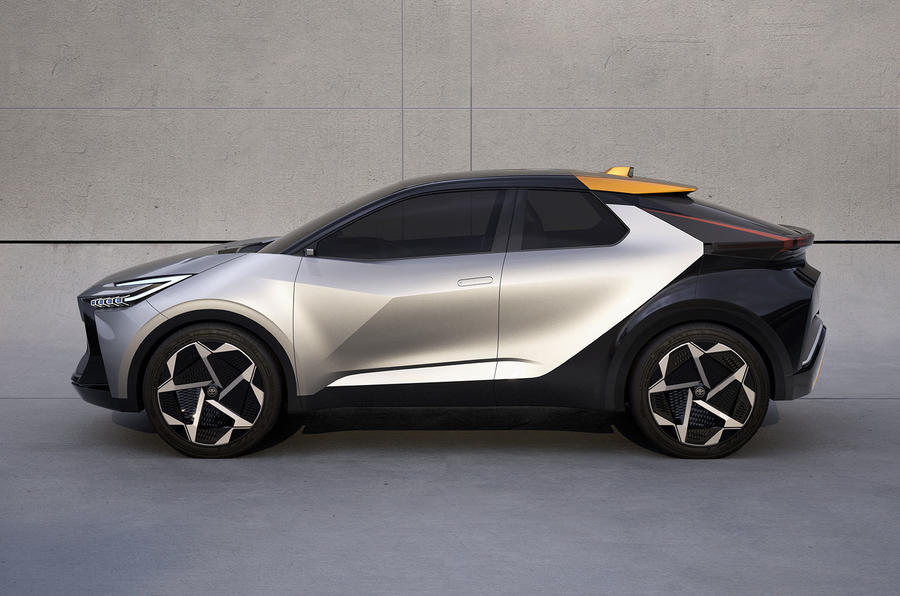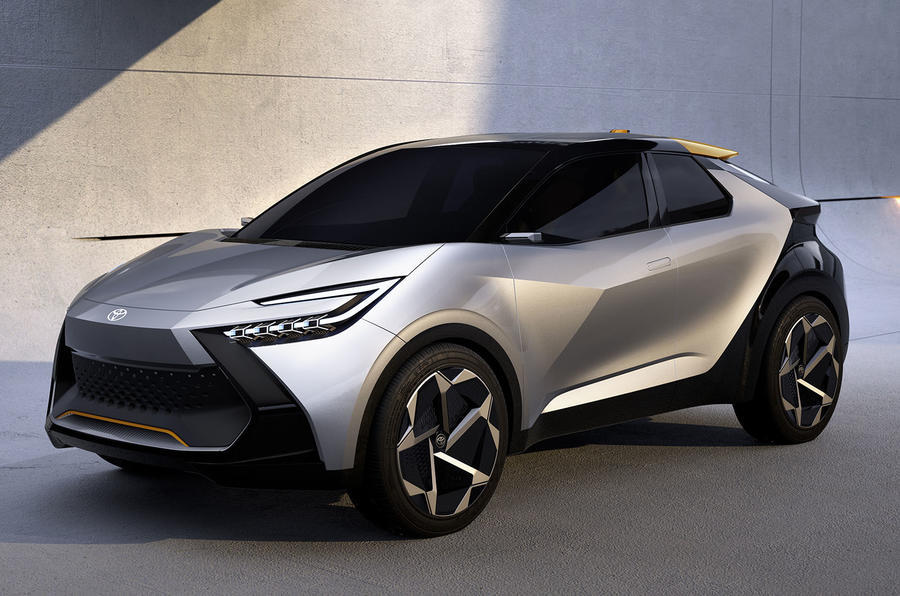The new Toyota C-HR will introduce a plug-in hybrid powertrain option – a first for the crossover
First images of reborn crossover teased showing thorough design overhaul for Nissan Juke rival
Toyota has teased the next-generation Toyota C-HR ahead of its official launched on 26 June, sporting a bumper-width rear light bar and illuminated rear logo.
Said by the Japanese firm to be an “edgy” and “sophisticated”, the thoroughly overhauled compact SUV is primed to take on the likes of the Nissan Juke and Kia Niro, moving upmarket by adding a plug-in hybrid powertrain to its ranks.
Recent images of the car testing on public roads look to show the final production version, the design of which should represent a radical departure from the current car.
Due on sale by 2024, the Mk2 C-HR will be a close sibling to the new Toyota Prius, underpinned by the same TNGA platform and offered with the same mix of parallel-hybrid and plug-in hybrid powertrains.

The latter will be a variation of the Prius’s PHEV set-up, pairing a 147bhp 2.0-litre four-cylinder petrol engine with a 158bhp electric motor on the front axle for a combined 221bhp. That’s a 40bhp boost over the current (2.0-litre parallel-hybrid) C-HR.
Should the C-HR also borrow the Prius’s 13.6kWh battery (a likelihood to exploit economies of scale and cut costs), a 50-mile electric-only range may be within reach.
The parallel-hybrid powertrain will be an uprated variant of the 2.0-litre which features in the current C-HR, expected to boost economy above 50mpg and provide a small power uplift to 191bhp.
Alongside the technical reinvention, the C-HR will be restyled with a focus on the new-look ‘Hammerhead’ front-end design being rolled out across the line-up to give Toyota cars a common identity.
The darkened teaser image hides just how closely related to the concept the production car will be, but clearly the distinctive C-shaped headlights and that wraparound rear light bar will make it through to showrooms.

Product manager Andrea Carlucci told Autocar that, in restyling the C-HR, the team focused on ensuring it was “still bold, still perhaps polarising”.
The C-HR may also gain a battery-electric variant, placing it directly in competition with the triple-powertrain Niro. Autocar’s spy photographer claimed this test car is a pure-EV proposition, suggesting Toyota’s Small SU EV concept from 2021 – itself almost identical to the more recent C-HR concept – is nearing fruition.
Toyota hasn’t confirmed whether an electric C-HR is in the works and wasn’t available to comment on these latest images, but the fundamental similarities between the C-HR’s TNGA platform and the EV-only E-TNGA architecture mean it would no doubt be a technical feasibility.
An electric version of the C-HR would be positioned below a larger electric coupé-SUV, known at concept stage as the bZ Compact Crossover concept, which will itself sit underneath today’s bZ4X in an expanded Toyota SUV line-up.
In line with similarly sized EV rivals, an electric C-HR equivalent would likely be significantly more expensive than the parallel-hybrid and plug-in hybrid variants, commanding a start price of roughly £40,000.
Source: Autocar
